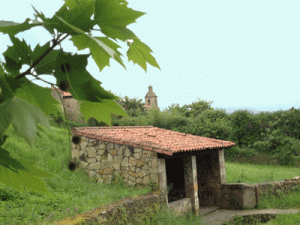Colindres is one of the smallest, in area, of municipalities in Cantabria but, in proportion, it is of the most populated. It is situated by the right bank of the Asón River´s mouth, 3 Km from Laredo, strategically located between the River Asón basin and the coast. Colindres is on an important cross road between Santander, Bilbao and Burgos, which makes Colindres a very well communicated municipality. This is reflected on its economical and demographic dynamism. It is one of the main localities in the Eastern Cantabria, together with Castro, Laredo and Santoña.
Colindres is divided into two different areas locally known as Upper Colindres (the old town) and Lower Colindres (the modern town). The modern town is strongly bind together with the sea and Colindres holds one of the most active fishing ports in Cantabria. Most of Colindres population is concentrated in the industrial, comercial and services industries.
A bit of History
The historical origin of Colindres dates back to the early Medieval ages, time in which news of the existence of the Monasteries dedicated to the Saints John and George and dependent of the Santa María de Puerto (Santoña). The oldest reference is found in the year 1085, where a council mentions “in villa Kolindres”. The regional code of laws in Laredo included, in the year 1200, Colindres under Laredo jurisdiction.
Colindres origins was concentrated in Upper Colindres, through which the Camino Real from Laredo to Burgos, a route the Emperor Carlos V followed pm his last journey, in 1556. This route went through four neighbourhoods: Puerta, Santolaja, San Juan and San Roque. Observing the architecture of its balconies with blazons we can easily imagine the municipality´s splendour in passed times.
Colindres has always been a fishing municipality. The geographic situation protected the place from pirates and English, French or Dutch corsairs attacks. The ship yard of Falgote (1475) was of great importance, as it become Reales (Royal) the 10th of April 1618 by means of a deal between Felipe III and the Hermandad de las Cuatro Villas de Cantabria, which was created in the reiverbank in the XVII century. Numerous galleons were built here being, together with the Guarnizo shipyard the main naval industry in Cantabria during the Middle Ages.
In the Indian general archive there is a huge quantity of letters of safe-conduct and shipping bills (they were compulsory) of the people of Colindres that left for South America as civil servants, soldiers or helpers. This is why it is possible that Colindres suffered an important population reduction although, during the functioning of the Falgote shipyard, the population grew bigger, due to the fact that workers from Vizcaya and Guipúzcoa moved to Colindres (carpenters, balcsmiths, caulkers, etc.). Colindres port was built in 1935.





